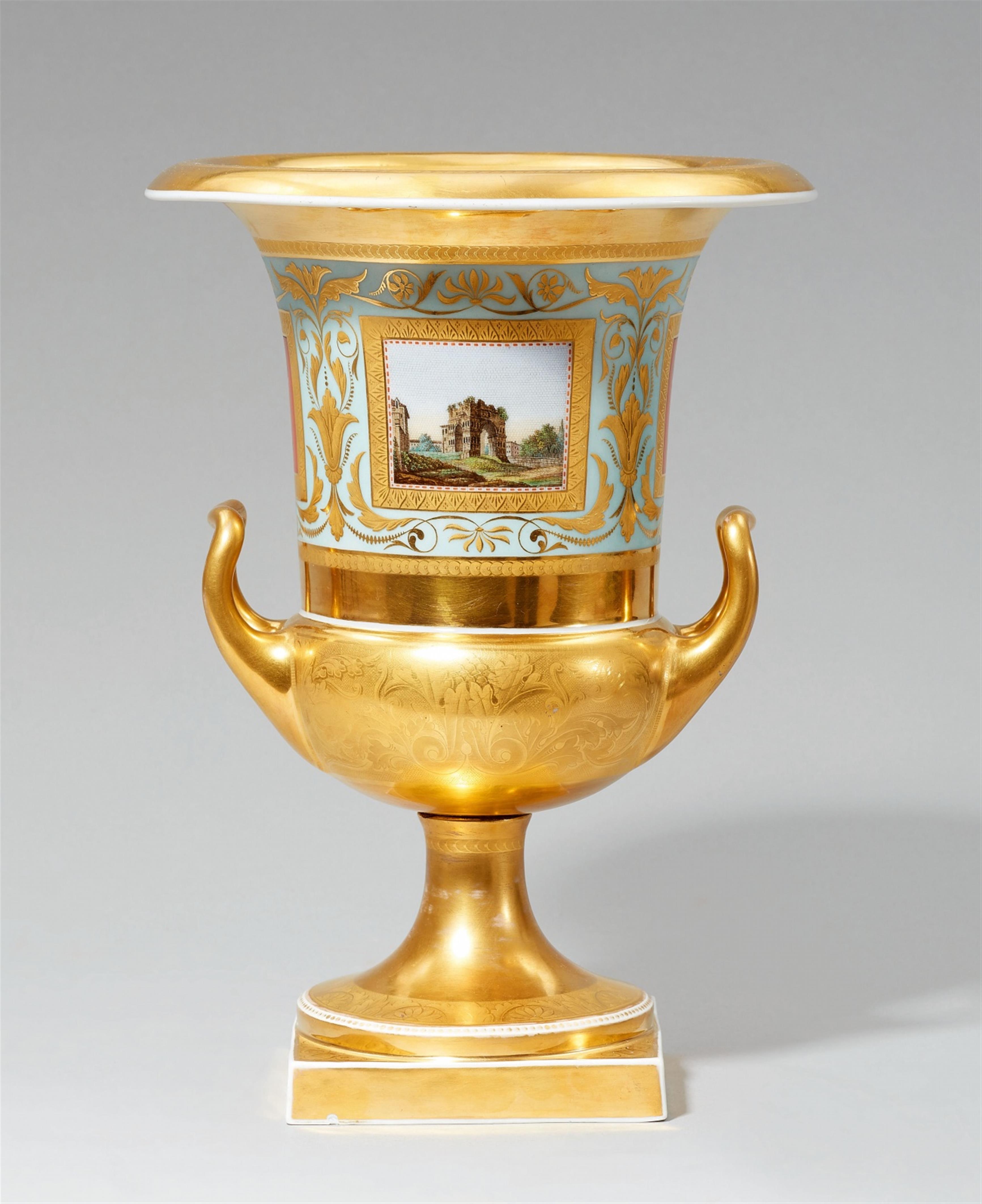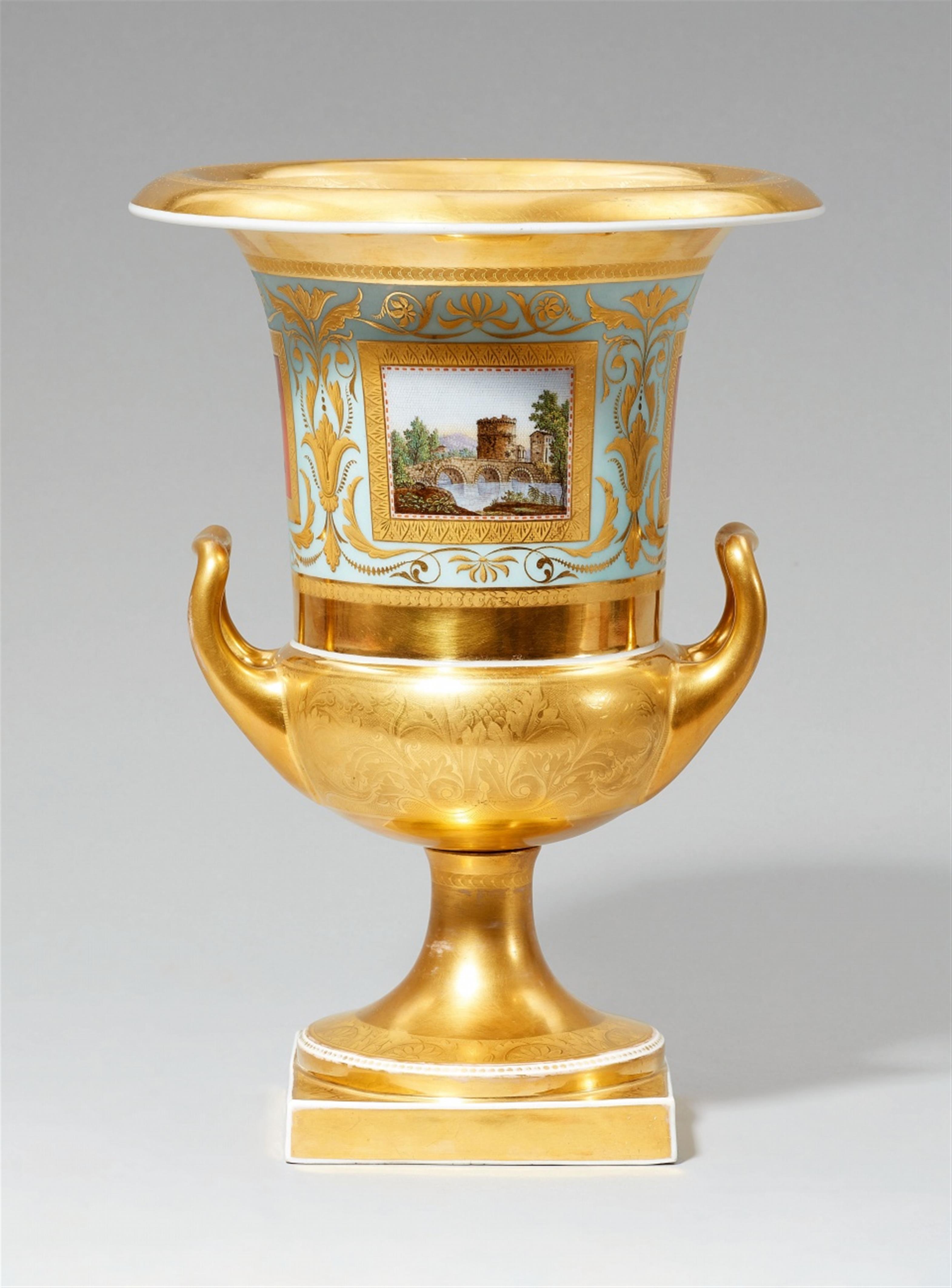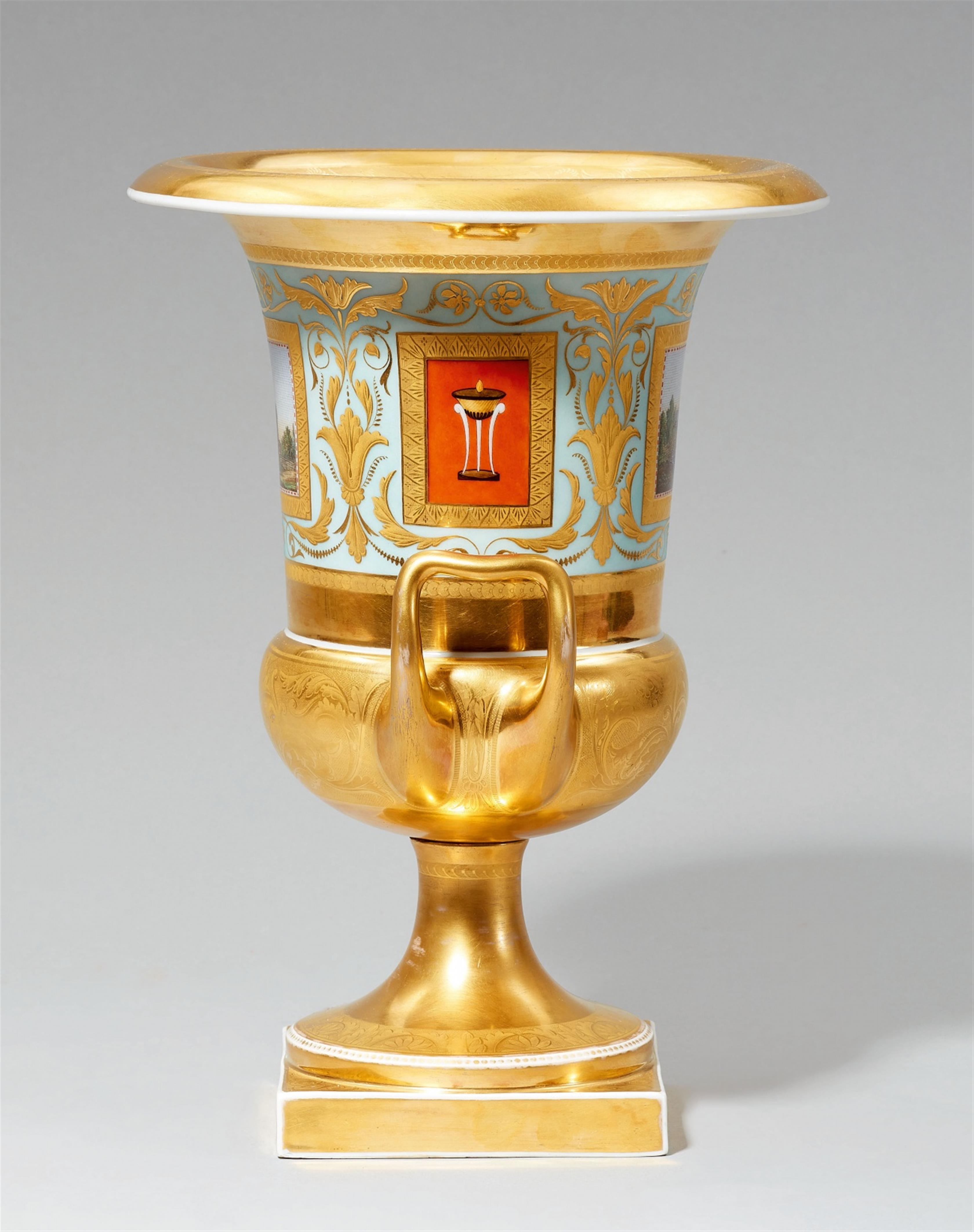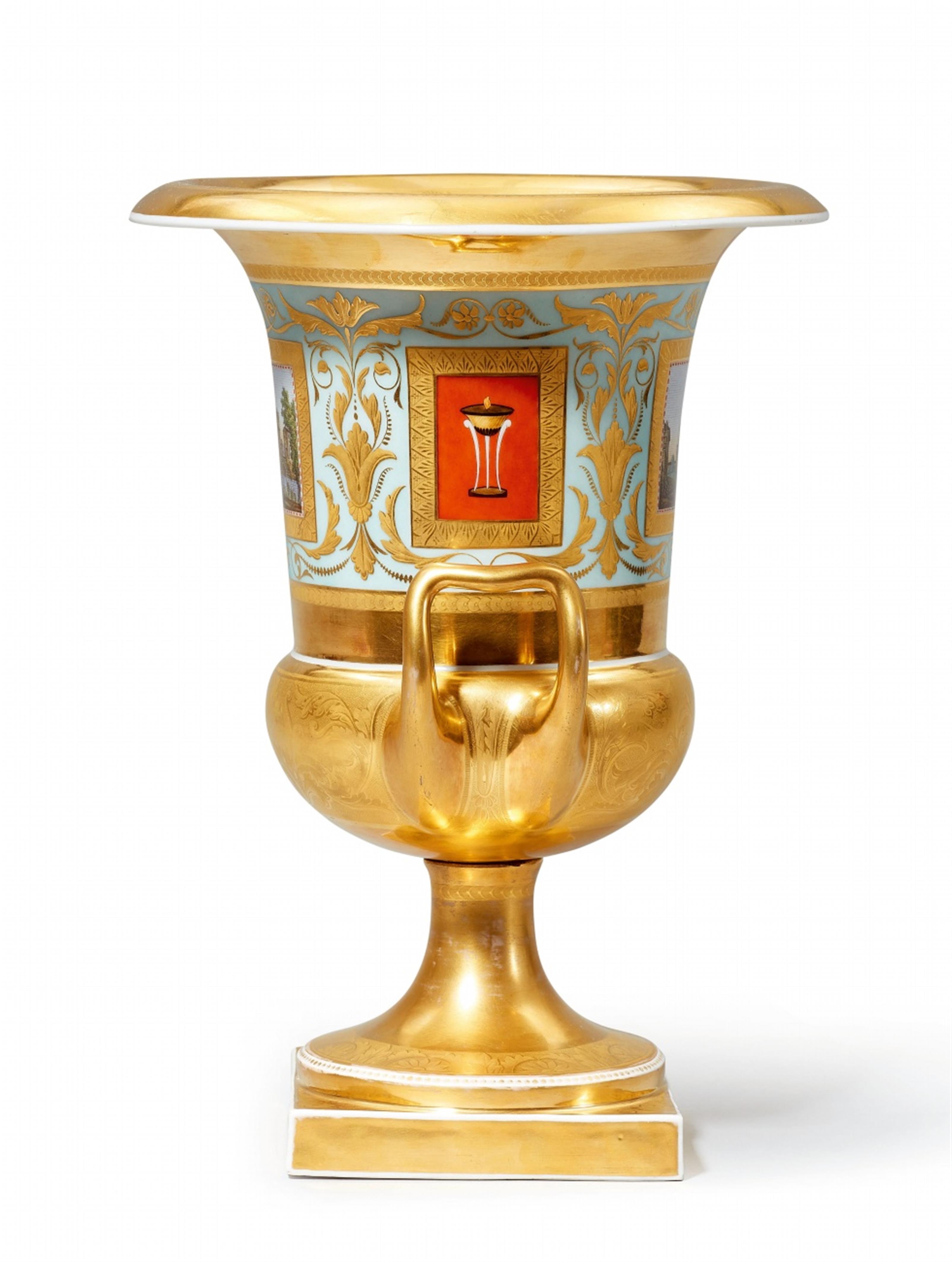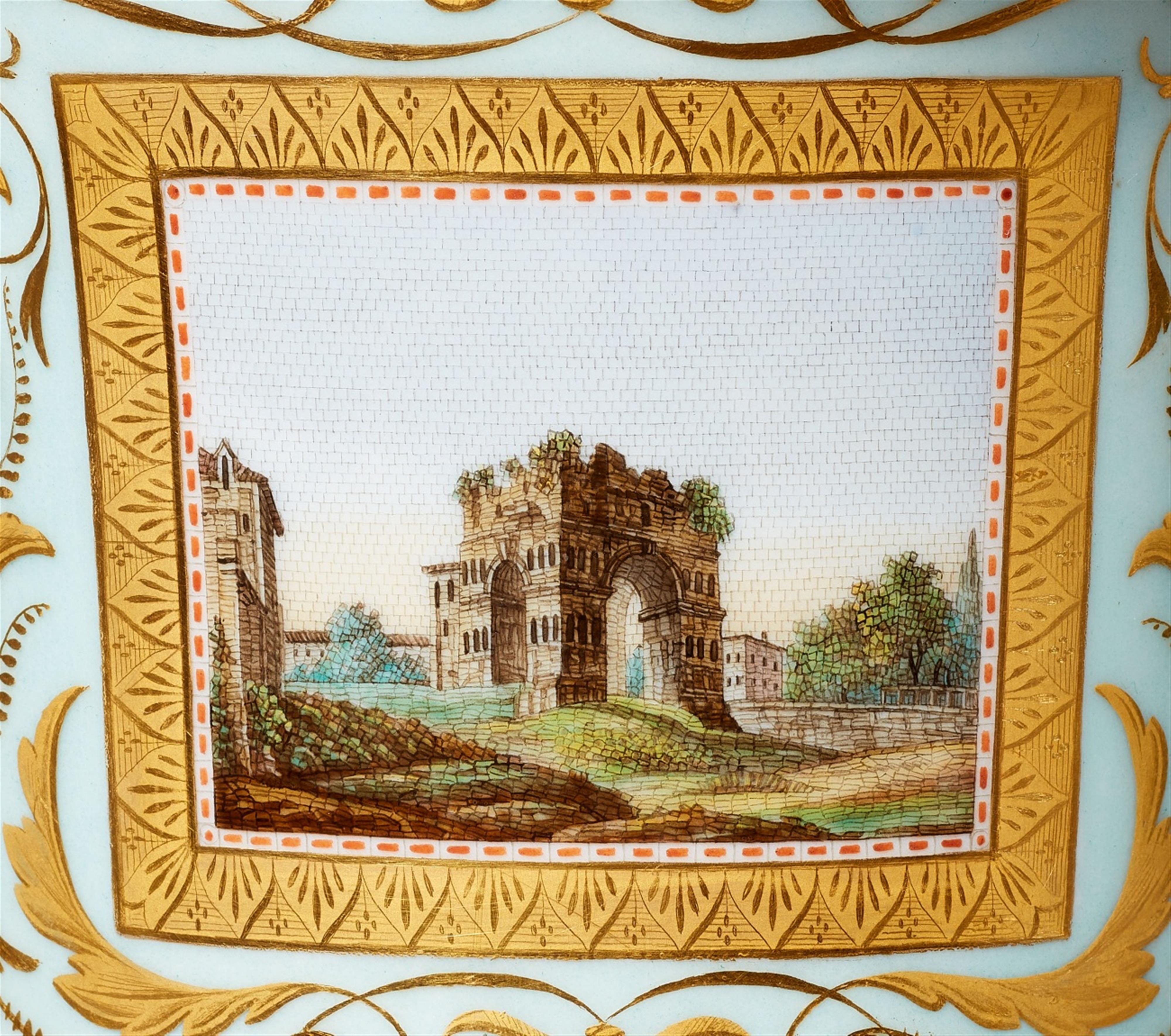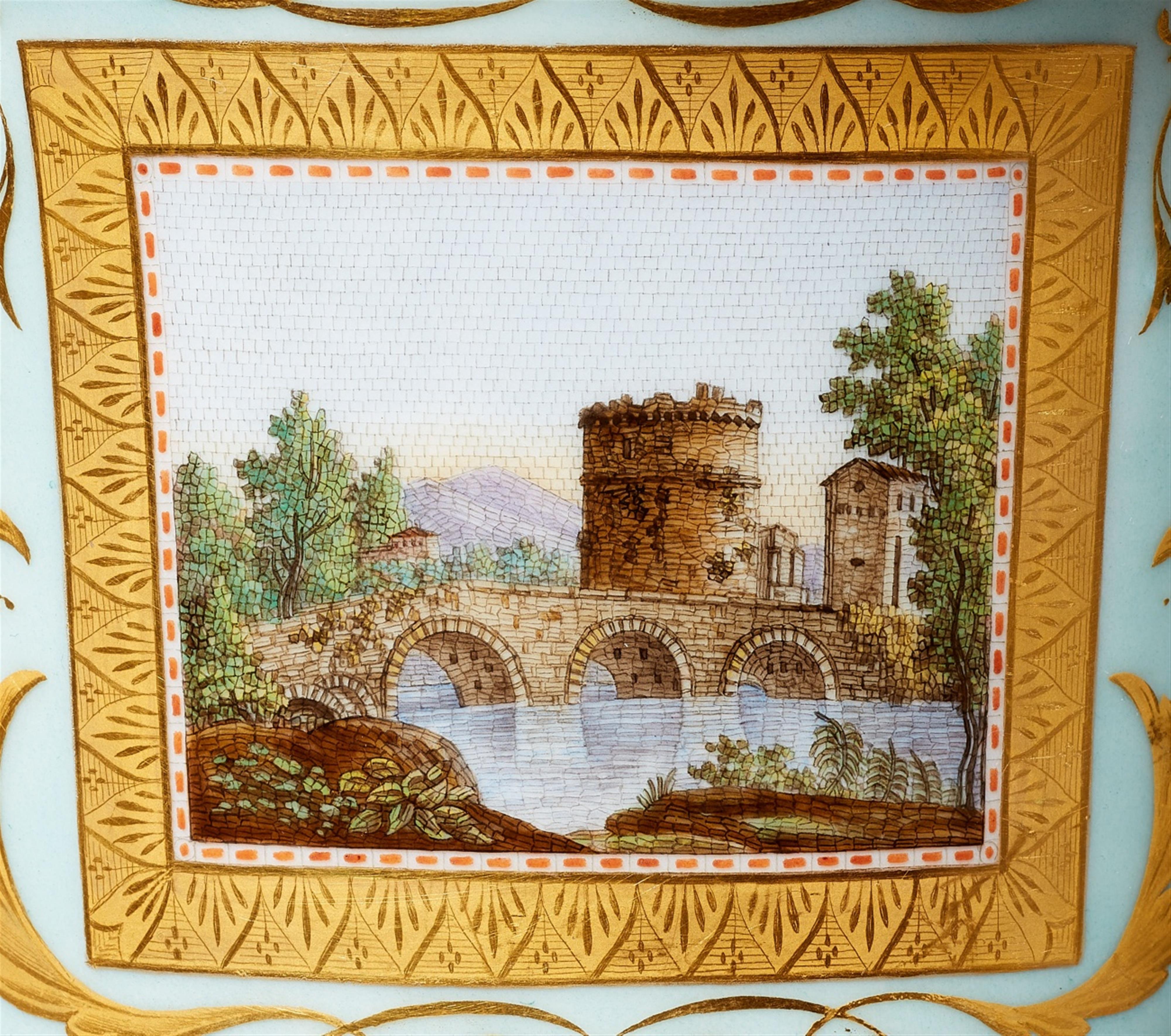A rare Berlin KPM porcelain vase with ruins in micromosaic technique
Model no. 1005, "Redensche Vase". Decorated with two finely painted depictions of the Ponte Lucano on the Via Tiburtina and the Arch of Janus in Rome in faux micromosaic technique alongside two depictions of tripods in faux pietre dura. Blue sceptre mark, brown imperial eagle mark. A small chip to the plinth. H 30.5 cm.
Circa 1823.
Micromosaic painting was introduced at KPM in around 1805 and perfected after the end of the Franco-Prussian war in 1815. No other manufactory in Europe was able to produce such finely painted miniatures in this style. The exact manner in which they were painted remains a mystery to this day. The works replicate the coloured glass mosaics produced in Roman workshops after classical motifs. The Studio Vaticano del Mosaico began production in the former half of the 18th century, and micromosaics soon became a typical souvenir of the Grand Tour. Designed as pocket-sized paintings to adorn jewellery and boxes, their small size made them an ideal keepsake as they were easy to transport. The complex process of recreating these works on porcelain meant that only a small number of vases and services were produced in this technique, most of which were royal commissions, and thus they are among the most sought-after collector's pieces today.

